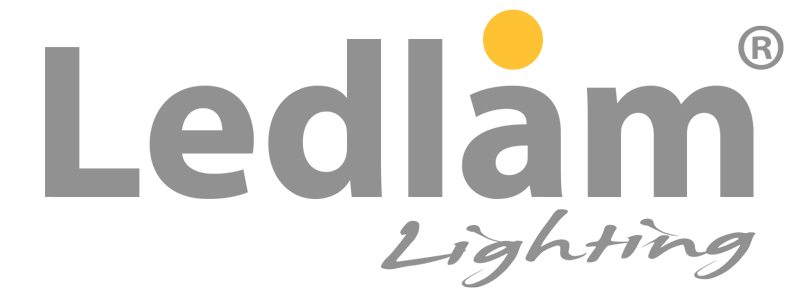Understanding U.S. vitality rules and requirements
Vitality rules play a key function in serving to scale back vitality consumption. They set the necessary necessities for brand spanking new constructing building and main renovations.
The nation’s high constructing vitality codes and requirements—Half 6 of Title 24 of the California Code of Rules, the Worldwide Vitality Conservation Code (IECC) and ANSI/ASHRAE/IES Normal 90.1 —are utilized by each U.S. state as the idea for native constructing vitality codes. These codes include the necessary lighting necessities that architects, designers, engineers and builders should meet for industrial and residential new building or main renovation tasks.
Take a second to have a look at your state’s rules: U.S. Energy Code Regulations by State Tool.
What’s new in 2024 for non-residential constructing vitality necessities?
In September 2023, the U.S. Division of Vitality announced:
“…$400 million for states to enhance constructing vitality effectivity, save customers cash, and make buildings extra local weather resilient”
—U.S. Division of Vitality
The affect of vitality rules
In sensible phrases, vitality rules purpose to scale back vitality consumption. The aim is to scale back human affect on local weather change. The newest international pattern focuses on reaching net-zero emissions standing. Which means operating fully on renewable vitality.
Many states have outlined plans and dates for reaching net-zero emissions standing. The U.S. has committed to reaching net-zero emissions by 2050.
Potential drawbacks of vitality regulation are actual, too.
Hasty regulating with out contemplating all potential use-case eventualities and penalties can have inefficient and problematic outcomes.
“Use of occupancy sensors in a daylit area can imply that lights come on when they aren’t wanted,” lighting designer Christine Culver famous in an article about occupancy sensor controls, including that some lighting controls require location-specific commissioning, have greater energy necessities and “are liable to false-on triggers.”
Sure vitality rules issues are well-known all through the trade. For instance, one California study discovered that lowering water circulate prompted backups or pipe issues. Different issues, in accordance with a report by American House Defend (AHS), which was created in 1971 to guard owners from the inconvenience and value of surprising breakdowns, embrace flushing, noise and water strain. Low-flow bathrooms “depend on a pressure-assisted system that makes a particular ‘whooshing’ sound which tends to be louder than an everyday bathroom flush.”AHS additionally found that, these decreased water circulate bathrooms could not power waste far sufficient down the drain, which might result in clogged pipes and different plumbing issues. “As a result of they use a decreased quantity of water and will apply much less strain than an everyday bathroom,” AHS notes, “low-flow bathrooms don’t all the time flush waste in addition to their normal counterparts. A second or third flush is usually wanted to make sure heavy waste has cleared the bowl, requiring the consumption of extra water and rendering the bathroom much less environment friendly.” The article cites further issues in older properties—as a result of “[t]he older the home, the better the prospect your plumbing could require adjustment or substitute with a view to be suitable with low-flow bathrooms. This will result in set up taking extra time and being dearer than anticipated.”
States main the way in which on vitality coverage
4 states have codes that override and exceed Federal vitality regulation:
- The California Constructing Requirements Fee (Title 24)
- Vermont Business Constructing Vitality Requirements (CBES)
- New York Metropolis Vitality Conservation Code (NYCECC)
- Washington State Vitality Codes (WSEC)
California’s Title 24 at the moment imposes essentially the most stringent set of rules. On the opposite finish of the spectrum, states like Georgia, South Carolina, North Carolina, Virginia, and Alabama are much less restrictive. These states at the moment abide by the IECC’s 2015 requirements.
Business lighting requirements for 2024
Regulatory adjustments for 2024 will carry the next 4 phrases to the forefront of economic lighting regulation discussions. These are essentially the most vital vitality regulation updates set for 2024 throughout the nation.
Lighting Energy Allowance
The Lighting Energy Allowance (LPA) is the utmost allowed watts per sq. foot. In California’s Title 24, the LPA is being decreased from .65 to .6 watts per sq. foot in 2023. The 2024 Worldwide Vitality Conservation Code (IECC), which might be obtainable within the first quarter of 2024, can even probably handle reductions to inside LPA.
Open Workplace Occupancy Controls
Occupant sensor controls are usually utilized in open-plan workplace areas, cafeteria eating areas, and fast-food eating areas. Beneath rules like Title 24, controls should be configured so common lighting could be managed in “zones,” with flooring areas not better than 600 sq. toes. Basic lighting in every managed zone ought to flip off after 20 minutes of occupants leaving a specific zone.
Automated Daylighting Controls
Automated daylighting controls seek advice from a photosensor and change or dimming management unit. The photosensor is mounted to the inside wall, ceiling, or mild fixture throughout the daylighting zone. It sends a sign to the management unit when the preset lighting threshold is reached to scale back electrical mild ranges in a specific zone.
Daylighting zones embrace:
- major side-lighting
- secondary side-lighting
- top-lighting
Major and secondary side-lighting zones are illuminated by home windows, whereas top-lighting zones are illuminated by skylights.
Automated Receptacle Management
Automated Receptacle Management, also called plug-load management, is required to scale back constructing vitality use. The federal government management limits vitality consumption at electrical receptacles throughout non-occupied occasions, which reduces what the federal government deems “pointless vitality utilization and value and helps sustainability.” As well as, some states require these receptacles as a part of code necessities.
Receptacle controlling strategies embrace:
- Schedule-based or timer-based receptacles that may change off at programmed occasions
- Occupancy-based sensor which should flip off electrical retailers inside 20 minutes of all occupants leaving an area
- System-based sign from one other management or alarm system which should flip off electrical retailers inside 20 minutes after figuring out that the realm is unoccupied.
Demand Responsive Lighting Controls
Demand Responsive Lighting Controls make the most of management mechanisms to dim lighting ranges in periods of excessive grid-wide demand, primarily to assist utilities in sustaining grid stability. In keeping with the Demand Responsive Lighting Management Declaration of California’s Title 24, (Half 6, Part 110.12(a)1B)
“…requires that each one demand responsive lighting controls be licensed by the producer as being able to responding to indicators from an OpenADR 2.0b Digital Finish Node [utilities or state-controlled software].”
—California Title 24 Demand Responsive Lighting Declaration, Half 6, Part 110.12(a)1B
Vitality credit score measures for lighting
IECC 2024 is including further effectivity credit to align with the brand new credit score choice included in ASHRAE 90.1 in 2022. Credit are more likely to be obtainable for the next:
- Dimming and tuning
- Extra occupancy sensors
- Enhance in daylight areas
- Mild energy discount

